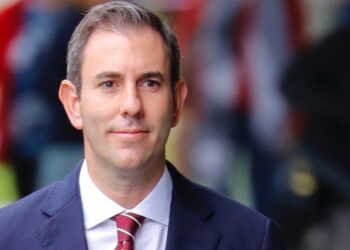Superannuation administrators are used to implementing regulatory and legislative change but, as Damon Taylor writes, the breadth of the Government’s Stronger Super policy means that this time it’s different.
If there is one perennial comment within the superannuation industry, it is that change is a constant. Invariably administrators and technology providers are at the coal-face of that change and yet for Darren Stevens, director of strategy for Bravura Solutions, the industry’s current round of regulatory reform is significantly different.
For Stevens, the change is no longer about basic rules but about the entire superannuation environment.
“I actually see this as quite different to some of the industry’s previous reforms in that there is a real structural change in the way businesses are being set up to deal with it,” he said.
“In the past, a lot of legislative change was mandated and was really around the rules that were applied during the administration of a product.
“But what we’re seeing today is people who have been focused on winning the race to retain and win new business,” Stevens continued.
“They’ve looked at FOFA (the Future of Financial Advice reforms), they’ve looked at MySuper and the question has been, ‘how do we position our business, how do we deliver scalable advice, how do we make sure that we retain the fund that we have today?’”
Seeing similar distinguishing features, particularly with respect to Stronger Super, Graham Sammells, CEO of the IQ Business Group, said that the role played by the Australian Prudential Regulation Authority (APRA) in the future would be of particular interest.
“One of those distinguishing features, and I don’t know how this will unfold, is that the role of APRA is changing quite significantly,” he said.
“It’s still a prudential regulator, but with MySuper it’s now also a product regulator – and that’s new territory.
“So whilst its going through its first exercise now of reviewing and approving products in MySuper, I think a lot of people will be paying close attention to how that continues to unfold,” Sammells continued. “I couldn’t speculate as to what’s going to happen, but it’s a new role and it’s a direct output of Stronger Super.”
Sammells said that the other aspect of regulatory reform that he would be keeping a close eye on was the data and payment standards introduced by SuperStream.
“It’s just one part of the SuperStream package but they’re very, very prescriptive and it’s going to be interesting to see how APRA, who’s typically a prudential regulator, deals with what are very prescriptive standards,” he said.
“So for both the ATO (the Australian Taxation Office), as they monitor employers, and for APRA, as they monitor the funds, the question is how will they actually monitor conformance to those standards?
“To what degree will they put in place additional reporting requirements on funds and employers? When and how do they think they’re going to enforce any potential administrative penalties?” added Sammells.
“These are all open questions and once again, this is new territory so it will be interesting to see how it all unfolds.”
Yet for John McMurtrie, CEO of administrator AAS, the fundamental difference between the super industry’s current round of regulatory reform and that which it has gone through previously is scope.
“On that occasion, the Cooper Review was the catalyst for all the changes that are now coming through the system,” he said.
“So for the first time in a long, long time, there was a holistic review that looked at various aspects of reform in superannuation.
“The Cooper Review then lead to the Government putting in place a committee to work out how they’d respond to it, with MySuper and SuperStream being the central recommendations,” McMurtrie continued.
“And this change, it’s got to be done because it’s now part of the regulatory environment.
“The only question is what sort of system we end up with after that.”
So with change that is significant both in terms of volume – and impact – already on the doorstep, game plan becomes critical and for McMurtrie, preparation is key.
“Obviously, I can only speak for AAS but we are very well prepared for both MySuper and also for SuperStream,” he said.
“We went through a major investment in new systems, and that investment has basically led to all of our clients being on our new systems as long as two and a half years ago.
“We’ve subsequently been investing in better web capabilities for members and also, importantly, for employers of all the funds that we support, so they can pay not only default contributions but also choice contributions through our web portal,” McMurtrie added. “That’s being rolled out as we speak.
“Because we had made the big changes in our systems before the end of calendar year 2010, we’re in good shape to meet all of these other requirements.”
Also citing early preparation, Stevens said that Bravura had been working actively with its superannuation client base throughout the entire reform process.
“We have our administration system changes for MySuper and for SuperStream available and going through our development cycle to be on track and on time with our clients’ delivery timeframes,” he said.
“And with SuperStream, we’ve been working proactively for at least 12 months with the client base, trying to engage with them, but I’d say there’s also been a level of reticence as the regulations haven’t been 100 per cent firm and they’ve had their attention focused elsewhere.”
For Stevens, the consequent concern was that for many funds, SuperStream had become a secondary focus.
“What we’re seeing is people who we think are coming a bit late to the party when it comes to SuperStream,” he said.
“They’re potentially putting in place some stop-gap solutions that give them the compliance tick, that allow them to be listening for messages on 1 July and allow them to start sending messages when they need to – but unfortunately it doesn’t go further than that.
“Those solutions aren’t what we believe to be long-term efficient solutions for those funds and they certainly won’t deliver them the benefits of SuperStream.”
Indeed, while Stevens’ concern was SuperStream implementations, Sammells said that the impact on employers would be just as hard for super funds to deal with.
“They’ve now got to deal with a MySuper conversation for those employers that have default arrangements so that’s a change,” he said.
“Employers have got SG (Superannuation Guarantee) increases, they’ve got other super-related tax issues that their staff are going to ask them, then they’ve got SuperStream coming as well next year.
“And yes, people are starting to have those conversations now. Employers are going to get plenty of advice from lots of different parties; whether it’s the funds, whether it’s the accounting firm, whether it’s the payroll bureau, whether it’s the financial adviser – this is ripe for a brain squeeze,” Sammells pointed out.
“And I think I’m fearing that’s just going to lead to a lot more frustration and disinterest, which is the exact opposite of what the policy objectives are.”
According to Sammells, as prepared as the industry’s service providers undoubtedly are, that preparation did not diminish the complexity of the task ahead.
“Everybody’s got their game plans in place but everybody’s still really struggling with the implementation timeframes,” he said.
“It’s not just the technology bits but more the change management bits, because you’ve got MySuper coinciding with SuperStream implementation timetables, and you’ve got APRA reporting requirements colliding from a sideways direction at the same time.
“Ultimately, the super industry’s trying to become easier to do business with but it’s mayhem,” Sammells continued.
“It’s like a long fire-fight and the fatigue factor is starting to set in because people know it’s going to be a long fire.
“And at the end of the day, we just have to deal with it. We haven’t got a choice but the art is in how.”
Yet one of the things administrators and technology providers have raised countless times, particularly with respect to regulatory change like SuperStream, is that the efficiency case has to stack up.
The premise, of course, is that if it does, the industry will be all too willing to implement because all stakeholders will reap the benefits.
Unfortunately the problem, according to Sammells, is that any such efficiency benefits will have such a long tail.
“Look, I think to sit down and write a business case today for it is really hard,” he said. “And that’s because it’s such a short runway from rules to implementation, particularly for SuperStream.
“Some of the components of the standards are really new, the message protocols are brand new for all e-commerce providers in the world. So there just aren’t that many tools that have been built, let alone mature tools, that someone can just buy and plug in to deal with these message protocols,” Sammells continued.
“Even the messages, the contribution and rollover messages, the SBR (Standard Business Reporting), XBRL (eXtensible Business Reporting Language) piece, it’s all new for super funds in a transaction environment.
“With so many new pieces in the puzzle, a business case for SuperStream should have a lifetime of 5+ years but that’s something I think people find pretty hard to swallow.”
However, for Martin Spedding, executive director for DST Global Solutions (Bluedoor), those super funds and service providers looking to the future would have seen SuperStream as an opportunity.
“My reading of the market is that those that are seeking to lead change and drive change in the market – to drive competition – and certainly those that are looking to be leaders in the market, would have already made that decision to move,” he said.
“And that’s prior probably to SuperStream because for them, SuperStream’s just another factor, it’s just one of many factors that would lead to an organisation embracing what is inevitable.
“And that is that legacy technology can only take businesses so far. Every time there’s a regulatory change you’re wasting money, you’re investing in legacy rather than in new, open-architecture technology which can provide a pathway to greater and greater operational efficiencies,” Spedding explained.
“For me, the question here is for which businesses will this be the final catalyst – or the straw that breaks the camel’s back?”
Indeed, Spedding suggested that the super industry was already well aware of what features their new environment would possess.
“We know that the pressures from competition are going to continue. We know that the pressure from customers and members is going to continue, and we know that there’s always going to be a significant pressure on the industry and on individual participants to reduce costs,” he said.
“With all of that change needing to be catered for and dealt with, and within the context of doing more with less, it’s hard to imagine that anyone can really afford to hang on to aged technology for much longer.”
Adding weight to Spedding’s point is an analysis done by Deloitte Actuaries and Consultants on the most recent APRA Annual Report.
According to Deloitte partner Wayne Walker, the key point was that super funds’ operating costs had increased more than 6 per cent in the last 12 months, a trend he said was unlikely to reverse in the short term.
However, for Sammells, such an observation is anything but surprising.
“Look, unfortunately I’m not surprised,” he said. “And again, I would attempt to justify it by pointing out that with increasing regulation, the cost of doing business is going up.
“And that’s not an argument against increasing regulation, that’s all for good risk management purposes. But there’s no doubt that tactically it’s increasing the cost of doing business,” Sammells continued.
“Then of course you have the short lead-times from policy to legislation to implementation, and what that means is that its really hard to take a strategic view on this.
“A lot more funds have to just ‘expense’ the activity here because it’s a long tail to be able to capitalise.”
Offering a similar perspective, Stevens said that an increasingly competitive environment across the superannuation sector was also a factor.
“We certainly have been seeing it [increasing operating costs] in surveys that I’ve been reading for the last three or four years,” he said.
“Rice Warner do a reasonable survey as well as the Deloitte one, and Rice Warner actually separate the total costs of the fund up between administration, investment and advice.
“So what you’ve seen is a trend towards a reduced cost of advice and reduced cost of investment but an increased cost in administration,” Stevens explained.
“And that’s just reflective of the fact that people are creating increasingly complex environments while they’re trying to deal with adding benefits to stop self-managed super fund leakage, at the same time as creating simple low-cost solutions and then, amongst it all, adding scalable advice.”
When asked whether super fund consolidation and trends towards fewer but larger funds would stem the tide by creating greater scale and efficiency, Stevens’ response was a firm negative.
“I’d actually point to the consolidation of superannuation accounts as a far more significant factor,” he said.
“Because throughout the whole of this process, you’re starting to get the consolidation of those small, low activity accounts and auto-consolidation is going to further exacerbate that.
“You’re going to have similar amounts of work and operational cost for these funds spread across a lower number of member accounts and so the apparent cost will go up,” Stevens continued.
“People have been paying, in a sense, those dollar fees on those smaller account balances in two or more places.
“That’s going to get consolidated and so my expectation is that that average cost per member will rise.”
In fact, for McMurtrie, there is little evidence that the per-member operating costs are actually lower in larger funds.
“What’s interesting is that if you look at quite small funds or you look at really large funds, the differential between what they charge their members is actually not that great,” he said.
“There doesn’t appear to be a lot of compelling evidence that being small necessarily puts you at a big disadvantage with respect to the fees charged to members.
“I remember when Jeremy Cooper was presenting his report, he envisaged a world where you might end up with 10 to 15 jumbo-sized funds,” McMurtrie continued.
“My argument was a bit different. I was saying that there’s a lot of criticism about the dominance of the big four banks – so if you want this industry to go the same way, well okay, but it’s not currently a well liked model.
“Besides, there are a lot of small funds that have actually done pretty well in the return stakes. So I don’t think there’s a lot of evidence that’s been presented suggesting that if you’ve got $100 billion, you’re going to necessarily be so much better off than someone that’s got $2 billion or $3 billion.”
As administrators and technology providers continue to grapple with what are not just changing superannuation rules but an entirely new way of doing business, the question becomes one of innovation. Where do those funds looking for a technological edge focus their efforts?
The answer, according to McMurtrie, lies in understanding members, giving them more options and making their lives easier.
“Firstly, funds want their members to be able to transact with them more and more through the web, but that’s just one part of it,” he said. “They want to provide members with more services, more options – and as I look at this whole industry you’ve almost got a circumstance where the retail master trusts want to look more like industry funds, and the industry funds want to look more like retail master trusts.
“So, it’s more investment options, better member service delivered through the web, better investment options,” McMurtrie continued.
“The third aspect is providing a much easier mechanism for employers who have to pay the 9 per cent going to 12 per cent: an easier way for them to actually make their contributions in a seamless way and where the employer can both pay their default amounts and also choice amounts as part of one transaction.
“We have to make it easier to transact for members but easier to transact for employers as well.”
And for McMurtrie, the final ingredient is understanding.
“Funds have to get a much better understanding of their member bases and also their employer bases,” he said. “And I’m talking there about the use of analytics – because if you don’t understand your members, you can hardly provide them with what they’re looking for.”




